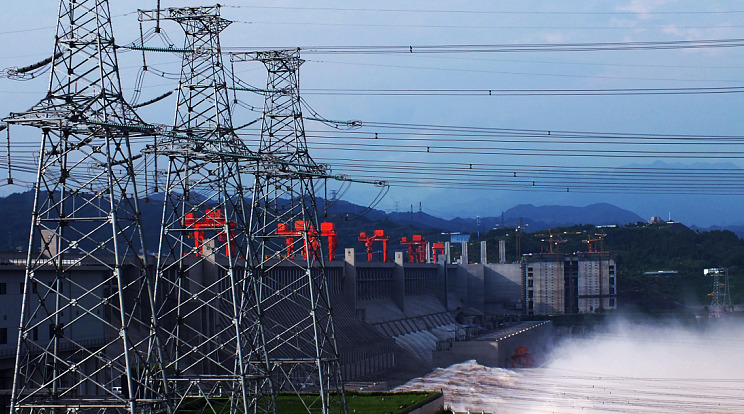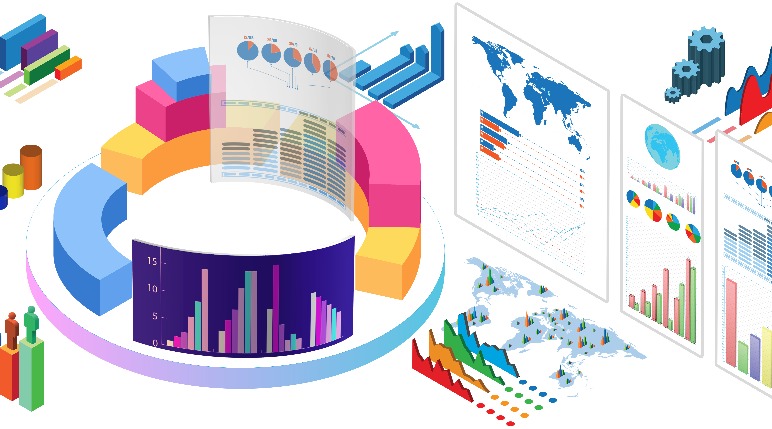90 Insights with Topic: 中国
China's biopharmaceutical industry is undergoing a landmark transformation, emerging from a period of profound recalibration to establish itself as a global powerhouse. Propelled by its talent, patient access, cost-efficient infrastructure, and catalysed by comprehensive government policies aimed at supporting the innovative drug value chain, the sector is experiencing a broad-based resurgence, with results beginning to show in earnings and valuations in the first half of the year. The journey, however, is just beginning, fueled by the impending global patent cliff and its strong value proposition: delivering high-quality, innovative medicines at an accelerated pace. This capability ensures China's biopharma sector an indispensable player in the global market, even in the face of possible geopolitical headwinds. In this article, we discuss about the leading innovators in the homegrown biotech landscape—companies well-represented in our Premia China New Economy ETF (3173/9173 HK) and Premia China STAR50 ETF (3151/9151/83151 HK), which have outperformed multiple benchmarks year-to-date and will continue to drive alpha returns for global investors, propelled by a revaluation trend driven by domestic policy tailwinds, strong external partnerships and a rising market value.
Oct 03, 2025
China’s A-share market is turning the corner, as investors looking past weak data and piling back into growth. Signs of rotation by domestic investors from bank deposits and safe haven assets to equity market increasingly validate investor confidence is back. Policy momentum, attractive valuations, and light foreign positioning are fueling a durable rally, echoing the 2016 supply-side reform. Leadership is shifting decisively to innovation-driven sectors — from biotech and healthcare to solar, AI, and robotics — where structural growth and global relevance are accelerating, and are expected to be important focus in China’s upcoming 15th Five Year Plan. In this article, our Partner & Co-CIO David Lai and Portfolio Manager Alex Chu discuss why, with sentiment improving and risk appetite returning, the best way to play China’s new growth cycle is through high-conviction exposure via Premia’s STAR50 ETF and CSI Caixin New Economy ETF.
Aug 26, 2025
Even for the prepared and informed, at the recent World Artificial Intelligence Conference (WAIC 2025), China has still taken the world by surprise with the debutante of its fleet of over 150 AI-powered humanoid robots. Indeed 2025 marks the beginning of commercialization and production of these futuristic robots, now made reality. While humanoid robots have captured the imagination of the popular media, there has been a more important revolution in the broader robotics industry, where China has emerged, as the global powerhouse, just as it did in renewable energy and electric vehicles. In this article, we discuss how humanoid industrial robots have quickly been integrated in China’s production lines, filling the productivity void from the country’s aging population, while further driving down the manufacturing production costs with high degree of automation with these embodied AI applications.
Aug 06, 2025
China is undergoing a profound economic shift anchored in industrial upgrading and technological self-reliance. Amidst global macro uncertainties, the country's relentless focus on innovation across strategic sectors—ranging from semiconductors and artificial intelligence to robotics, green energy, and biotech—is building the foundation for sustained long-term growth. In this article, we discuss how these structural advances, often overlooked amid cyclical challenges, are already yielding tangible outcomes and positioning China at the forefront of the next wave of global industrial transformation. As policymakers are busy drafting the 15th Five Year Plan, and wrapping up the last stretch of the 14th Five Year Plan, it is also important to note how these innovation-led developments would continue to be at the forefront of the policy initiatives, and inform us of market opportunities ahead.
Jun 22, 2025
It is worth noting that while the significant rally in BATJX – Baidu, Alibaba, Tencent, JD.com, Xiaomi – and the offshore listed tech/internet players have dominated headlines lately, the bottoming out of the overall China market since the policy shift in late September last year started onshore, with A shares experiencing a sharper rebound first and with a more slower but sustained trend, as domestic investors were more sensitive to the reset in policy tones and significant shift in government’s commitment to reviving economic growth and capital market activities. In this article, Partner & Co-CIO David Lai discusses the factors that could drive a more sustained outperformance in onshore equity market, and why it is a good entry point to rotate from offshore to onshore companies in policy supported sectors.
Mar 20, 2025
The Two Sessions have delivered a strong signal: China’s economy remains focused on steady growth, with robust government support, despite mounting global uncertainties. With an economic target of 5% growth for 2025 and the highest budget deficit in three decades, policymakers are set to implement a more proactive fiscal policy. This will include increasing government financing to drive domestic demand and boost private sector confidence. In this article, our Partner & Co-CIO David Lai highlights growth and policy supported areas to focus, during this ideal window to add exposure for Chinese equities, particularly opportunities from leaders in artificial intelligence (AI), semiconductors, robotics, and biotech that are still trading at attractive valuation via a via global and even offshore listed China peers.
Mar 09, 2025
China’s financial markets stand on the cusp of resilience and opportunity, buoyed by proactive government interventions and structural reforms. Beijing’s commitment to fostering innovation in artificial intelligence, semiconductors, and renewable energy highlights its strategic pivot towards self-reliance. Meanwhile, reforms aimed at enhancing corporate governance and shareholder returns signal a shift toward greater efficiency and market appeal. While challenges persist, including heightened US tariffs and soft domestic demand, the leadership’s “all-in” growth strategy and flexible policy framework highlight a clear long-term vision for sustainable development. For investors, China in 2025 presents a wealth of opportunities across a range of sectors—from cutting-edge technology and dividend-focused equities to stable government bonds and a recovering real estate market. In this article, our Partner & Co-CIO David Lai suggests that this year could be one of the strategic investments for China with potential for substantial returns.
Jan 07, 2025
Given the inextricable links between energy-hungry Artificial Intelligence and renewables, energy storage and smart grids are a necessary “final mile solution” in the intensifying AI race. They provide the critical capability to store and dispatch huge quantities of uninterrupted renewable energy/power on demand without compromising emission reduction targets. In this regard, China is uniquely positioned to tackle the related challenges of AI and renewable energy with its rapid development and upgrades of energy storage systems and smart grids. In fact the country has long been studying intertwined strategic relationship between AI, technology and energy, and studiously incorporate such thinking into its Five Year Plans, and which are subsequently being rolled out as China’s East Data West Computing initiative. Further to our recent insight on China’s “power infrastructure” as the critical enabler for AI-development, in this article, we zoom in on China’s capabilities and investment opportunities in energy storage as the linchpin that holds the last mile solution, and matches renewable energy production with industrial demand in China’s journey to a high-tech, modern society.
Sep 11, 2024
China’s household consumption appears to have been massively underestimated in international comparisons, because of differences in data definitions and valuation methodologies. The two big areas of differences in international comparisons are: 1) Social transfers in kind, which could be worth some 6% of GDP; and 2) The value of housing services provided by owner-occupied homes, which could be worth another 5% of GDP. In this article, our Senior Advisor Say Boon Lim discusses why the criticisms of China’s growth model and "underconsumption" look flawed.
May 09, 2024
While investors would look at it as a period of crackdown on for profit tutoring businesses, since the “Double Reduction” policy (to reduce the pressures of homework and after-school tutoring) in 2021, young students indeed are able to spend more time on extracurricular activities that they enjoy. Given the size of addressable market, there has been a proliferation of various STEM (Science, Technology, Engineering, and Mathematics) learning, traditional culture and art-jamming activities in China, including many well-equipped new establishments fitted out with the latest digital technologies such as AI, 3D exhibitions and robotic guides, catering to various developmental needs and interests of children who now have more free time at hand they can deploy for more fun activities. Take the Guangdong province for example, there are 150 public libraries, 144 cultural centers, 352 museums, and 141 art museums built as of 2023 – and many of these are free of charge or charge very affordable fees available for both locals and visitors. In this article we share some of the popular ones that you may find of interest for your next trip to the region.
Mar 26, 2024
Consumer spending in China continues to grow strongly by international standards, even as the pattern of that spending evolves. The image of weak consumerism in China – as portrayed by the media – is misleading in two ways. For starters, the growth in retail sales in China is only “low” relative to the very high (mostly double digit) rates recorded in the 2010s. However, at 7.2% y/y growth in the full year 2023, China’s retail sales growth compares very well internationally. Beyond that, there are also changing social trends which are driving different forms of consumption in China, which then support investments that are more reflective of the transformation in China. In this article, we discuss more about how young Chinese are the main driving force in China’s consumer market and identify the winners of this quiet but significant sea change in consumer behaviour.
Mar 01, 2024
There is a big disconnect between the image of the Chinese economy portrayed by the media and the underlying data. As we start the year, we review key pieces of data from both China and the US. In summary, while the data for China has not been as good as the market may have liked, it was better than what the media would have had us believe. A quick run through the China data for the first nine months of the year, as collated by “China Briefing”: Growth in real GDP 5.2%; industry output 4.0%; services output 6.0%; retail sales 6.8%; fixed asset investment 3.1%. These are very decent growth figures by any international comparison. And China achieved the above figures with a smaller fiscal deficit than the US and while bearing the burden of rebalancing growth away from dependence on the property sector.
Jan 15, 2024
Global markets have hit extremes in sentiment – extreme exuberance towards the US and Japan and extreme pessimism about China. That sentiment has in part been driven by straight line projections of the cycle – the expectation that the US will continue its current path towards “Goldilocks” and Japan can sustain its currency depreciation-led earnings growth. The risks are that the cycle in the US transitions not to “Goldilocks” but to recession, and Japan’s Yen depreciation/reflation cycle cannot be sustained without dangerous inflation and ultimately government debt consequences. For China, the extreme in pessimism is predicated on the assumption that China cannot escape its cyclical weakness of the last 12 months, notwithstanding its ample policy “ammunition”.
Dec 18, 2023
Investors should expect a better return in Chinese equities in 2024 after three consecutive negative yearly return. Indeed, it is the first time that China stock market has recorded an annual loss three times in a row. Slowing economy, heighted China-US bilateral relationship, strong dollar and property market slump all contributed to the disappointing performance in the past twelve months. Looking ahead, the market may offer more upside risks because of (1) stronger supportive policies rolling out to help lift economic activities and particularly the property sector, (2) geopolitical tensions tuning down with increasing dialogues between Chinese and US top government officials, (3) domestic long-term investors’ buying and foreign investors’ current significantly underweight position in Chinese equities, and (4) value emerging from the discounted share prices on both absolute and relative basis. Bamboo is a symbol of longevity in China because of its durability, strength, flexibility, and resilience. It survives in the harshest conditions, persevere and still standing tall and staying green year-round. When the storm comes, bamboo bends with the wind. With business and consumer confidence continue to recover amid the much more accommodating, easing environment, Chinese entrepreneurs and the equities market should finally be in for a year of promising growth ahead.
Dec 18, 2023
Bloomberg reported that Chinese policymakers, led by the Ministry of Finance and the National Development and Reform Commission, are planning to launch a new round of stimulus, involving a potential issuance of at least RMB 1 trillion of additional China government bonds and an upward revision of fiscal budget deficit. Some investors may be worried about its negative impact on the bond market with the potential jump in supply. In this article, our Partner & Co-CIO David Lai discusses why we agree with most analysts that it would not create any lasting impact even if the plan materializes. In fact, China remains disciplined in fiscal policy whilst the overall monetary stance stays accommodative. China government bonds have outperformed almost all other sovereign bonds this year due to the rate cuts and low inflation expectations. The long end of China yield curve in particular benefited the most year-to-date, with the yields on 10-year, 30-year, and 50-year having fallen 13.8bps, 18.0bps, and 20.2bps respectively already.
Oct 19, 2023
China has emerged as the world’s largest consumer and producer for industrial robots and equipment. In fact, the country recorded US$6.6 billion sales of industrial robotics in 2022, most of which were produced domestically, far more than the second largest country Germany which registered US$2 billion sales during the same year. Propelled by its changing demographics and its evolution from low-cost manufacturing to high-value added processes, China will continue to drive the development of a homegrown robotics sector and pursue manufacturing upgrade, as underscored by China’s 14th Five Year Plan which explicitly laid out the national strategic goal of building a modern high tech society. Sector leaders would be natural beneficiaries of support measures for this broad policy. In this article we discuss more about how along with development of a highly integrated ecosystem of high tech processes and smart manufacturing systems, China is also integrating new materials, new energy, smart grids and energy saving systems, etc. to its technology-enabled ecosystem that sits well with China’s 2060 net zero targets, and its national strategic goal towards a modern, high tech society.
Sep 29, 2023
The youth unemployment rate in China has been much talked about, however the phenomenon is often poorly interpreted without addressing the important nuances behind the structural, transformational and societal factors in China. In fact, the elevated unemployment rate is a transitional legacy from COVID and many countries also shared the experience of high youth unemployment. There is a lag in China’s youth unemployment data compared to western countries, given China’s relatively late reopening from the COVID pandemic. In this article, we discuss the structural factors contributing to the youth unemployment rate in China, and explain why the number will likely to decline and why the unemployed youth will be absorbed into workforce as China continues on its path of recovery.
Aug 24, 2023
In a refreshing break from the consensus of gloom surrounding China, Cambridge Associates wrote recently that the Chinese economy was not stalling. Meanwhile IMF holds steady its China GDP growth forecasts in the World Economic Outlook Update report released last week, at 5.2% for 2023 and 4.5% for 2024. In this article, our Senior Advisor Say Boon Lim shares more about why China may surprise to the upside and the appeal of Chinese equities as a relative value play.
Aug 03, 2023
The “Urban Village Redevelopment” initiatives outlined at the Politburo Meeting in July could potentially create new housing demand which is valued at over RMB 2 trillion per year and property fixed asset investment worth RMB 0.4 trillion per annum. What is urban villages, and why is it a significant development to monitor? In this article, we discuss why urban villages are an integral part of China's new phase of urbanization, and how this links up with China's smart and green city planning, and a holistic set of initiatives that roll up to building China towards its goals of building China into a high tech, modern society under the 14th Five Year Plan.
Aug 02, 2023
With the world except for China busy taming inflation, the China “lost decade” narrative has been driving pessimism over Chinese assets in recent months. How much of this fear could be substantiated and how much of it is fear of shadows? In this article our Senior Advisor Say Boon Lim reviews this topic from multiple angles, and explains why China today is unlikely to be Japan 1990 given significant differences in labour forces, total factor productivity (TFP), government policy focus, R&D spendings, financial resources and tools available to the government as well as structural growth from urbanisation and well capitalised state-owned banks that continue to support the case for China to avoid Japan’s secular stagnation.
Jul 10, 2023
As China’s post reopening recovery has taken a slower pace than the high hopes of the markets, there have been concerns that China’s economic growth will be lower for longer resembling Japan’s "Lost Decade". However it is important to note China and its people do have a solid track record of resilience, and there are several structural features of China that differentiates it from other emerging markets or Japan in its growth trajectory. In this article, our Senior Advisor Say Boon Lim shares 12 interesting charts to review in the context of China’s relatively high economic resilience (as measured by the Swiss Re Institute’s Resilience Index), comparing with MSCI Emerging Markets ex-China’s key constituents namely India, Brazil, South Korea, Taiwan, and Saudi Arabia. Economic resilience being a product a policy stability and prudence, are pointing to an undervalued opportunity in Chinese equities and the appeal of Chinese government bonds for its stable yield at a time when other countries’ government rates and bond yields are surging.
Jul 03, 2023
Premia CSI Caixin China Bedrock Economy ETF (2803.HK), Premia CSI Caixin China New Economy ETF (3173.HK), Premia China STAR50 ETF (3151.HK), and Premia Asia Innovative Technology and Metaverse Theme ETF (3181.HK) recently completed the annual rebalancing exercise after market close on Jun 9th 2023. In this article we highlight the changes and provide a brief analysis of the post-rebalance profiles of each ETF.
Jun 19, 2023
While China's April data did miss market expectations, the disappointment was off very high expectations set by the market itself. In fact, the so-called April “disappointment” looks very different when viewed in a global context. In this article our Senior Advisor Say Boon Lim discusses why it is important to look beyond the underperformance of those high expectations, to properly address opportunities leading to China's own 5% growth target and IMF’s estimates for China to contribute around 30% of the world’s GDP growth for this year which still very well hold.
Jun 08, 2023
Investors used to prefer privately owned enterprises (POEs) over state owned enterprises (SOEs) in owning Chinese equities in the past. This was under the conventional thinking that the former tends to be more efficient, growth and profit-oriented, and innovation driven, while the latter is often constrained by more bureaucracy and non-profit priorities including social responsibility, support employment and social stability, and traditional DNA that are less conducive to changes and innovations. With strong government backing and all the new government policies promoting the SOE reforms and emphasizing SOEs’ value discovery, it may be time to challenge the stereotype as there emerges a new cohort of SOEs that begs to differ and has full backing of policy makers to reinvent themselves and unlock values to commensurate their contributions to the real economy. In this article we discuss the background behind the SOE re-rating/ revaluation trade that has become popular lately, and identify the optimal way of getting the right exposure of Chinese SOEs.
May 26, 2023
China’s stock market rode a wave of positive sentiment on a policy shift that brought the world’s second-largest economy out of lockdown, pushing the CSI 300 Index up 4.7% for the quarter and leading to even stronger performance for strategies applying intelligent factor tilts within the bedrock economy and new economy. Even so, macro data throughout the quarter charting China’s recovery from strict zero-COVID containment measures led some investors to question the strength and sustainability of the nation’s economic rebound. In this article, Dr. Phillip Wool, Global Head of Research of Rayliant Global Advisors discusses first-quarter performance and considers what the next phase of China’s reopening could mean for investors.
May 18, 2023
Banking failures in the US, the recent epic takeover of Credit Suisse and the wipe out of its AT1, speak volumes about the stage of the cycle in Developed Markets. In particular, they warn against underestimating the risks at this stage of the asset and economic cycles. The Fed now risks a return to 1970-1985 if it loses its nerve on rates, and it is going into battle with very little – rates are lower than at previous cyclical bottoms and inflation is higher. In this article, our Senior Advisor Say Boon Lim shares his reflections on the US cycle, inflations, rates and asset markets, and while US asset market outlook is worrying, why China is increasingly becoming a safe haven trade for investors.
Mar 20, 2023
China markets witnessed strong rally since Oct 2022 trough upon China reopening and covid policy pivot, and we start to see investor flows rotating from offshore to A-shares which are expected to outperform with a longer run for rally. Where are we in China’s reopening trajectory? Who are the policy supported sector leaders well placed to outperform? These are the common questions frequently asked by our clients. In this article, we discuss the 10 most frequently asked questions that came up in our recent conversations with investors and allocators, and share more color about pockets of opportunities as China reopening evolves into the second act for economic growth recovery.
Mar 17, 2023
China market has taken a pause after a strong rally in the past few months. The renewed hawkish tone from the US Fed may be the main reason behind the consolidation. Some critics are suggesting that the China reopening trade is done, or has become overcrowded already with not much immediate upside as a tactical trade. In this article, our Partner & Co-CIO David Lai addresses this topic from various aspects ranging from macro economies, investors’ positioning, to policy agenda and market valuation. He would also share why we believe it’s onshore A-shares that are picking up the baton for the second act of the rally - as the China reopening play evolves from short term tactical, to fundamental strategic opportunities driven by positive earnings growth and restoration of business and consumer confidence.
Mar 02, 2023
Chinese stocks took a rollercoaster ride in Q4, as the immediate lacklustre reaction to October’s National Congress gave way to a rally on the back of policy support in November. Investors finally cheered Beijing’s abrupt dismantling of its restrictive zero-COVID policies, as the year came to a close. By the end of December, the CSI 300 Index was up 2% on the quarter. Below in this article, Dr. Philip Wool, Managing Director and Head of Investment Solutions of Rayliant Global Advisors, would explore critical developments in the macro picture at the turn of the year, discuss fourth-quarter performance and factor rotation pattern through the period, and also provide our thoughts as to what reopening has in store for Chinese stocks in 2023.
Feb 04, 2023
In 2022, our Premia CSI Caixin China Bedrock Economy ETF (“the Bedrock ETF”) outperformed most of the market benchmarks, such as FTSE A50, CSI 300, CSI 500 and ChiNext, by around 10-24% points. In a backdrop of weak equity performance, investors favored low beta and volatility stocks with significant economic value and good financial health, which coincided with the Bedrock ETF’s underlying index methodology and broadly explained why the ETF outperformed in 2022. In this article, we would have a more in-depth look at the portfolio holdings’ companies and decipher drivers of the outperformance and whether this multi-factor approach of low volatility, value, quality and size tilts would continue to power outperformance in 2023.
Feb 03, 2023
If we agree China may offer outperformance in 2023, then the next step is to figure out the right positioning to capture the alphas. Investors are now at a crossroad to decide whether China tech is still investible. On one hand, the Internet platforms, used to be the market leaders, may no longer be the high-growth candidates in future as shown by the recent sluggish financial results. On the other hand, technological advancement remains one of the government’s key agendas that should help support the sector. In this article, we would like to share how to identify the “right” tech exposure to capture the opportunities in China market.
Dec 13, 2022
2023 will likely present investors with a stark economic divergence – between a West in recession and an East where growth will be boosted by recovery in China. ASEAN-5, which already enjoyed its own reopening rebound in 2022, will likely ride the tailwinds of China’s turn at a reopening recovery in the coming year. In this article, we would discuss how ASEAN-5 will likely continue to be in a sweet spot in 2023, offering some of the highest economic growth rates with relatively moderate inflation.
Dec 12, 2022
It was challenging for global investors to find a market that could offer a positive return in 2022. China market can’t escape from the selloff, with H-shares, A-shares and ADRs down by 20% to 29% in dollar return in the first eleven months of the year. The market turnover was shrinking whilst foreign investors were net selling. Internally, the frequent COVID-lockdowns, a property market slump, an ongoing Internet scrutiny, and the deteriorating bilateral relationship between China and the US all contributed to the bearish sentiment in Chinese equities. Externally, the Ukraine-Russia war, high inflationary pressure, an accelerated rate hike cycle, and strengthening dollar have further weakened investors’ confidence towards risky assets.
Dec 06, 2022
In a discordant world, there are no overarching investment themes. The different parts of the world are marching to different drums – their economies and markets are driven by different cycles, different prior policy choices and factors beyond their control. The US economy and market are paying back for the extreme policy stimulus of 2020-2021. Europeans are paying back for the same, with the added pain of a war outside their control. Japan is battling a chronic ailment – extreme debt – made acute by sharply higher cost of US funds. China is at the bottom of its policy cycle, at the beginning of a path out of COVID health controls.
Dec 05, 2022
Sichuan has a very real climate change issue to manage this year. After extreme heatwave and drought causing power rationing for industrial users for two weeks, the province is now quickly re-gearing for Level IV flood emergency alert. While most factories are able to resume production now, should we be concerned especially with memories from the power crunch actions last year? What would be the impacts and ripple effects we should pay attention to? In this article we reviewed the background triggering the Sichuan situation, and why we believe the power rationing events are more pre-emptive in nature and energy security is very carefully managed in the planned economy of China.
Aug 31, 2022
Notwithstanding the cautious sentiment towards Chinese equities over the past year, the fundamentals suggest that it would be increasingly difficult to ignore Chinese equities as its economic heft and importance continues to grow. In this article, our Senior Advisor Say Boon Lim analyzes the fundamentals of the Chinese economy and why it makes sense for global allocators to deploy Chinese equities for diversification and growth opportunities as the alternative would be a deliberate underweight decision for a large part of the world's GDP and the key driver for global productivity growth.
Aug 11, 2022
It’s again time for annual rebalance of our Premia Asia Innovative Technology and Metaverse Theme ETF (3181 HK) as well as our China A-shares ETFs - Premia CSI Caixin China New Economy ETF (3173 HK), Premia CSI Caixin China Bedrock Economy ETF (2803 HK), Premia China STAR50 ETF (3151 HK). The rebalances were successfully completed on Jun 10th 2022, and in this article we highlight the changes made and also provide brief analyses comparing the profiles before and after the rebalance exercise.
Jun 16, 2022
Q1 has been an eventful start for the year 2022 where the world has experienced economic turbulence, regional conflict and continued COVID impact. United States is facing record high inflation tackled with aggressive monetary policy on interest rate hike and balance sheet reduction. We have also seen regional conflicts causing supply chain disruption in certain field such as oil and gas. In China, although in a much better inflation environment, Covid outbreak since late Q1 in Shanghai and some other cities had caused some disruption to China A share market.
May 13, 2022
2021 has been a challenging year for many, with significant divergence within the Chinese equities universe and frequent growth/ value factor rotations through each quarter. We had also experienced regulatory and policy headwind and tailwind that drove significant market movements. Since the end of 2021, China’s equity market has experienced correction which has brought valuation back to attractive level. Both our Premia CSI Caixin China New Economy ETF (3173 HK) and Premia China Bedrock Economy ETF (2803 HK) continue to provide effective diversification tools to global investors and we illustrate a 50/50 blended portfolio that would outperform the broader market and its peers consistently.
Mar 02, 2022
In the US the “triple peaks” in economic growth, earnings growth and policy stimulus will likely result in much lower returns for US equities in 2022. The persistently high inflation – which will likely run hotter in the US than Europe and Japan – is already causing greater volatility as US equities are put on tenterhooks over the timing and magnitude of rate hikes. Meanwhile US Dollar could weaken on inflation rather than strengthen on higher Treasury yields. On the other hand, Emerging Markets, usually do better during periods of Dollar weakness but this time we could see a new twist - this favours China, supported by easier financial conditions. On top of all these, how is the Omicron Virus going to impact the global markets and what are the implications for global asset allocations in 2022? Why ASEAN would be a good diversification within Emerging Markets? Further to Part 1 of our 2022 outlook piece earlier, in this Part 2 sequel our Senior Advisor Say Boon Lim laid out the scenarios and discussed how we can reposition for the global shifts accordingly to address the transition to tightening and pivot from US equities.
Dec 16, 2021
After the smooth sail in 2020, 2021 has been a challenging year for investors with heightened volatility across global markets. Asia Pacific ex-Japan equities, Emerging Asia and in particular China had a good start until mid-February, but then returned all the gains and stayed largely flat on increasing regulatory headwinds in China, extended COVID-lockdowns in southeast Asia, threats of power crunch and credit defaults among Chinese property developers. On the contrary, benchmarks like S&P500, Nasdaq and Euro Stoxx 50 all reached new highs during the year, and Nikkei 225 hit its highest point in three decades. Meanwhile, the divergence in the fixed income markets went the other way, as global fixed income market suffered a mid-single-digit percentage loss in return, while China sovereign bonds bucked the trend with a high-single-digit percentage gain. Where do we go from here? Is the Omicron virus going to reset the path to 2020? And how do we decipher impacts of the Fed tapering, inflation and interest rate expectations, and economic growth and policy trends in China? In this article, our Partner & Co-CIO David Lai assesses the world economics and markets current standings, focusing on China and Asia, and discusses how to reconfigure for new opportunities that arise into 2022 as a year of the new normal.
Dec 08, 2021
The recent regulatory crackdowns and power suspension in China have unnerved many international investors. How to configure for opportunities under the lens of common prosperity and China’s commitment for carbon neutrality by 2060? In this article, we compare the Premia China STAR50 ETF (3151.HK) and Premia CSI Caixin China New Economy ETF (3173.HK), and discuss why they are useful implementation tools to capture long term opportunities in hardcore technology and strategic new economy sectors under the 14th Five Year Plan.
Oct 12, 2021
We recently completed the annual rebalancing exercise for the two China A shares and Asia Innovative Technology ETFs. In this article our Portfolio Manager Alex and Partner & Co-CIO David will share more about the changes and portfolio characteristics post-rebalancing, which further align with strategic focuses of China’s 14th Five Year Plan, and recalibrate for opportunities in the new normal as COVID recovery in China and Asia enters the next stage.
Jun 24, 2021
A popular media narrative for the recent correction in Chinese equities was that it was caused by tightening of financial conditions in China.
Mar 31, 2021
Being the first-in-first-out, China has been the first one to reopen and recover from the pandemic last year. While the recovery has been uneven and is still underway going into 2021, in Q4 we observed sector and factor rotation started to kick in, with Value and LowRisk being the best performers toward the year end.
Mar 23, 2021
Economic policy settings between the United States and China – which have been diverging since the onset of the COVID-19 pandemic – are now on stark display as a result of the recent outcomes of the annual plenary session of the National People’s Congress.
Mar 18, 2021
The great divergence between economic growth in China versus the rest of the Emerging Markets post-COVID-19 has increased the likelihood of a parting of ways between China and EM in asset allocations.
Mar 09, 2021
US sanctions on trade, technology, and financial market access have done little to dampen foreign investor enthusiasm for China. There has been a surge in foreign investment flows, both portfolio and direct, into China over the course of 2020: All of which begs the questions “why” and “how sustainable is this”?
Feb 25, 2021
To summarize the year of 2020, the opening lines from Charles Dicken’s A Tale of twin cities sounds like an accurate description. It was certainly the best of times and the worst of times. Global equities have been doing reasonably well with developed market up by 12.0% and emerging market up by 11.7%. Fixed income managed to gain by 7.4% whilst gold price was up by 19.1%. On the other hand, real economy has been suffering from the pandemic with almost all major economies getting into recession. International Monetary Fund sees the world would contract by 4.4% in total output, the worst crisis since the 1930s Great Depression with -5.8% among advanced economies and -3.3% on developing countries.
Dec 02, 2020
From a total portfolio perspective, global asset owners and allocators are increasing wary about the overall portfolio sensitivity to interest rate changes and ultimately risk diversification. The concept of “equity duration” was raised long ago and has been subject to debate for decades. While some absolute calculations fail to work in today’s markets, we believe the economic and financial intuition beneath still hold. In this working paper, we took a renewed approach to analyze the relationships from a relative perspective and with an overarching objective of total portfolio risks in mind.
Nov 26, 2020
As business activities in China mostly resume to a normal level, we also observed some mean-reversion in factor returns, and interesting rotation in sector returns. Still, China A shares continue to outperform the US and global equity markets. With “high-quality” growth emphasized by the 14th Five-Year Plan and “Dual Circulation”, we believe “Quality Growth” will continue to be the main tone of China A equities.
Nov 11, 2020
The latest economic data confirms the upward trajectory of Chinese growth, putting China on track to be the only major economy to register growth for the full year 2020. And it highlights the attractiveness of China’s asset markets and supports the case for continued outperformance against other major markets.
Oct 28, 2020
Two separate news items last week focused our attention on the gap in understanding about the rapidly changing energy landscape in China.
Oct 20, 2020
The Chinese economy continues to normalize across the board at an impressive rate, leading to the strong likelihood of it beating the current Bloomberg consensus GDP estimate growth rate of around 2% for 2020.
Oct 06, 2020
在经历今年首季度的急剧抛售后,全球股市在近几个月表现亮眼。这个反弹看似是典型的非理性“大爆发”,因为全球主要经济体正在或即将进入衰退期,且全球新冠肺炎疫情仍未见缓和之势;然而,从另一方面而言,这具前瞻性的市场走势,可能反映出投资者已走出疫情阴霾,整装以待争相捕捉股市V型反弹所带来的投资机遇。 中国A股市场既拥有稳健的基本面,又具相当吸引人的估值。因应全球股市下跌,投资者可考虑稳步增持中国A股。本篇文章中,我们将简述当前市场动态与如何精准捕捉中国A股反弹的增长机会。
Sep 04, 2020
Highest recorded yield spread between the China 10Y Government Bond and the 10Y UST. The yield spread between the China 10-year government bond over the 10-year US Treasury recently hit its widest ever recorded level.
Aug 25, 2020
Are US indices rallying because of COVID-19? The most common narrative is that “US stocks have been rising despite the pandemic.” Perhaps a more accurate explanation is “US stocks have been rising because of the pandemic”.
Aug 12, 2020
After the fall in Q1, global equities recovered sharply in Q2 as the COVID fear eases and stimulus packages kick in around the world. YTD, China is the best performing emerging market, and the broad CSI 300 index gained 14% in the second quarter. From factor investing perspective, we continue to see the dispersion of a two-speed-economy despite an overall beta pick up. Quality growth new economy stocks continue to be the winner.
Aug 11, 2020
The international media reckoned a front-page editorial in the China Securities Journal calling for a “healthy bull market” to create “new opportunities in crisis” was responsible for last week’s red-hot run-up in the Shanghai Composite Index. But perhaps there are less “exciting”, but more enduring, explanations for the surge in Chinese stocks.
Jul 13, 2020
For Premia CSI Caixin China Bedrock Economy ETF (2803.HK), there were 90 changes among the underlying index constituents during the latest rebalancing in June. The one-way turnover ratio was 33.5%, in line with the historical range between 30% and 40%. The value factor continued to work well with the ETF becoming more attractive in terms of valuation by replacing overvalued stocks with undervalued one. The forward price-to-earnings ratio dropped from 8.1x to 6.3x whilst the price-to-book ratio remained at 1.1x. The quality factor also functioned as designed with both return-on-equity ratio and profit margin increased post-rebalancing. The former rose from 8.9% to 9.7% and the latter increased from 11.3% to 13.6%, reflecting the current stock pool is healthier in financials and stronger in profitability. In addition, the low-volatility screen did help reduce the portfolio’s risk, as shown by the volatility falling from 29.5% to 28.9%. Last but not least, the index’s revenue rose from RMB 19.1 billion to RMB 21.1 billion, capturing the mainstream economy of China. Overall the post rebalancing portfolio represents a basket of constituents with better resilience during the COVID and US China tension induced market growth, with cheaper valuaton, higher ROE, higher profitability, strong debt coverage and lower volatility.From a sector perspective, the major change was reducing exposure in Consumer Discretionary and Industrials, and increasing weights in Financials, Real Estate and Utilities. Drilling down into sub-segments, the additions in Financials are mostly leading banks with attractive valuation, while the deletions in Consumer Discretionary are mostly automobiles related given the challenged fundamentals for the sector. Notwithstanding the market environment, Chinese banks so far have only been affected mildly by the economic slowdown. For example, the industry’s return-on-equity fell slightly from 11.7% to 11.0% and NPL ratio edged up from 1.83% to 1.86%. On a positive note, the net interest margin even surprised on the upside with the number going up from 2.18% to 2.20%. In respect of potential NPL pressure, the additions are also considered with the balancing factor of quality factor, thus focusing banks with robust fundamentals but suppressed valuation during broad market drawdown. Automobile industry was a totally different story with the national sales strinking for the 2nd year in a row. The total vehicle sales fell by 8.2% to 25.8 million in 2019, after having slid nearly 3% in 2018 in the first contraction since the 1990s. The slump was exacerbated by weak economic growth, the trade war with the US and tough new emission standards introduced last summer.For Premia CSI Caixin China New Economy ETF (3173.HK) which has continued the strong trajectory and performed well through COVID and after the rebalancing with YTD ~20% return as of Jun 22nd, it had a higher turnover rate compared to the previous rebalances given the evolution of the new economy trends becoming more pronounced since COVID. There were total 113 replacements, and the one-way turnover was around 45.7%, slightly higher than the historical range of ~40%. As the index methodology prefers companies with light-asset business model, the consistuents showed a slight increment in non-fixed asset ratio from 0.857 to 0.859 post rebalancing. In terms of financial health, the updated basket of stocks reflected a higher quality in general with significant improvement seen in the debt coverage (0.86x to 1.71x), return-on-equity (9.7% to 12.6%), and profit margin (14.6% to 17.3%), representing a more robust set of fundamental staying power for growth given the current market conditions. In fact, this has also been reflected in the resulting strong growth numbers - the index constituents are expected to grow faster with the estimated revenue growth rising from 9.7% to 15.0% after the resuffle. A mid-teen growth rate is indeed impressive amid the macro slowdown and the challenigng COVID-19 impact.From a sector point of view, the major change is an increase in Information Technology versus a reduction in Healthcare and Consumer Discretionary. The additions in Information Technology were diversified into semiconductor, software and communications equipment, which align well with the new infrastructure and Industrial IOT development mentioned in our previous research articles. With the government’s intention to speed up the technolgoical advancement, it is quite rational to see more emerging industry leaders in the capital market. The latest policy expands the conventional infrastructural investment to encompass digital infrastucture aka #New Infrastructure such as 5G network, data centers, Internet of Things and cloud computing are expected to help groom the local champions. On the contrary, the deletions in Consumer Discretionary were mainly auto or consumer-electronic related since consumers were reluctant to make big ticket purchases in an uncertain environment. Besdies, the exports business might also get affected negatively from the rising tensions in global trade.Within Healthcare, the deletions focused on traditional pharmaceuticals which could face more headwinds ahead, in particular for the companies which produce generic drugs. Beijing has been pushing forward a system that requires drugmakers to go through a bidding process and cut prices low enough to be considered over generic copies if they want to sell their products at public hospitals via large-volume government procurement.For Premia Asia Innovative Technology ETF (3181.HK), there were 8 changes out of 50 stocks if excluding Alibaba which switches from the ADR to the shares listed in Hong Kong, due to its re-classification of the primary listing from the US to Hong Kong. Also, each stock is re-scaled back to an equal weight of 2% in the portfolio, following a rebalancing discipline of profit-taking and buying on dip. Among the 8 inclusions, there are 5 Chinese companies, 2 Japanese companies and 1 Korean company covering themes including new infrastructure, media & web services, biopharmaceutical and semiconductors. Only Chinese and Japanese companies are in the deletion list, in which their businesses are mainly related to media & web services, robotics & automation and industry 4.0. Most of the changes in the index were driven by whether the company’s market cap can reach or fall out from the top 50 in the universe.Similar to China New Economy, the post-rebalance portfolio reflects also a basket that resonates well in the COVID/ post-COVID world, where a lot of behavioural changes YTD become permanent phenomena. In terms of sector, although Technology remains the major components, there are some adjustments to the composition reflecting the impacts from the YTD environment. It has shifted some of its weightings from “electronic equipments and hardwares” to “new infrastructure and semiconductors”. The reduction in the former might be partly due to the shift in global supply chain as some multinational corporations have been moving manufacturing bases to the low-cost countries such as Vietnam and Indonesia. The increase in the latter was probablay a result of the policy direction in promoting the domestic competitiveness in technology. Certainly, the stimulus plan in allocating more resources in new infrastructrure also helps the stock performance. For the rest of other sectors like Healthcare, Consumer and Industrials, their respective weightings stayed around the same. The outcome is a diversified basket of innovative technology-enabled leaders across various growth themes, and across currently China, Japan, Korea and Taiwan. Rather than high growth small cap companies or illiquid private companies, these are sector leaders with proven track record, R&D and growth fundamentals, and thus provide a more liquid exposure to the more resilient innovative technology players well positioned to capture the emerging megatrends including consumer and enterprise digital transformation, healthcare/ biotech/ pharmaceutical, and AI, 5G, robotics and industrial automations.
Jun 24, 2020
随着联网汽车和智能家电等消费领域的应用日益普及,物联网(IoT,Internet of Things)已逐渐为人所熟知。 而在工业领域,正如我们一再强调与关注的话题——企业数字化转型将重写产业游戏规则,而工业互联网(IIoT,Industrial IoT)正是其中的重要环节。 事实上,工业互联网即是中国新基建七大重点投资领域之一,受到中国官方政策的大力支持。 所以,工业互联网是什么? 为何其中的行业领导者在疫情期间更具弹性? 在本篇文章中,我们将分享工业互联网的概念,以及该领域的发展进程和投资机会。
May 26, 2020
Yes, possibly. The different approaches taken by the US and China towards managing COVID-19 has likely set the stage for a widening of the growth differential between the two countries. Immediately, the earlier reopening of the Chinese economy means China’s GDP will still show a bit of growth this year. This compares to the controversial, tentative easing of restrictions in the US, only in May. Even if the US gradually normalizes from here, its GDP for will end 2020 with a big hole, which will take three to four years to fill. If China maintains its productivity growth, it should be able to manage a long-term average GDP growth rate of around 5.8% a year. Meanwhile, long-term US GDP growth from 2022 onwards could ease to 1.5% on lower investment/lower productivity growth. Taking into account IMF projected growth rates for 2020 and 2021, China could overtake the US in Dollar terms by 2029.
May 13, 2020
We previously highlighted the gaming industry just after the coronavirus outbreak in Account of an atypical, tech-enabled CNY holiday. With the COVID-19 pandemic raging on globally and people spend more time at home social distancing, the gaming industry has shown greater potential of booming opportunities. The large demographic base of tech-savvy and mobile-first youths born in the digital era provided a strong head start for China, especially in eSports.
May 11, 2020
The COVID-19 pandemic has slowed down productivity and daily lives, stagnated the global supply chain, and affected financial market returns across almost all asset classes. In the first quarter of 2020, all markets around the world reported negative returns with varying degrees. While it seems that all is going the same direction, especially in the equities’ world, the fundamental risk factors were not. Among the fundamental factors we employ for China A shares, some has performed better than others amidst the market drawdown.
Apr 28, 2020
Premia CSI Caixin China New Economy ETF performed well and went up by 3% in a down market. In this article, we would like to share with you the reasons behind the strong performance and the comparison of this strategy with the other mainstream indexes that investors usually track in respect to performance attribution, sector allocation, niche thematic exposure and top drivers.
Apr 24, 2020
疫情冲击下,中国推出40万亿人民币的"新基建"计划振兴当前经济,"#新基建"因而频频炒上热搜榜,点燃市场广泛关注及业界讨论。 "新基建"到底为何? "新基建"概念股又该从何下手?
Apr 17, 2020
The COVID-19 outbreak has led to a worldwide pandemic, a global slowdown, arguably a recession and hopefully not a depression. Business activities globally have been halted due to the outbreak and demand has been shrinking significantly as well. Apart from some of the Asian countries including China, we have yet seen an inflection point of the case curves in most countries. In this article, we’d like to share some notable leading Chinese players in the space that have been working hard to fight against the virus for the domestic and global community.
Apr 03, 2020
The virous outbreak becomes one of the largest threats to the global economy and financial markets in decades. Will China, the one which has been suffered from the pandemic first, be able to bounce back first and lead the recovery worldwide like the Global Financial Crisis back in 2008? The latest call in new infrastructure investment maybe the key.
Mar 20, 2020
The coronavirus situation in China seems to have improved a lot, and now many are worried about what will happen as the factories get back on their feet. How's the progress so far?
Mar 10, 2020
Recent market rallies, despite COVID-19, are neither “ill informed” nor “complacent” Markets are looking past the viral outbreak Stocks will likely return to being driven by whatever the trends were before the outbreak Developed markets are at the tail end of bull moves – they could edge a bit higher but the risks are on the downside, and that's got nothing to do with COVID-19 either Chinese equities could ironically outperform developed market stocks this year
Feb 24, 2020
The geopolitical risks that dominated global markets for much of 2019 faded in the last quarter as the US and China reaching a phase one trade deal (which happened on Jan 15th and we discussed in China: Beyond Trade Deal Phase 1). As a result, global equity markets posted gains and China A shares also performed strongly in Q4 2019 against this backdrop.FACTOR PERFORMANCEProductivity Growth was the best performing factor in Q4, followed by Quality. The two factors were the best performing factors in 2018 and they kept the trend in 2019. Value showed a slight sign of reversion in Q4 but remained the worst performing factor throughout the year.As a result, the two Premia multi-factor China A shares ETF saw different performances in 2019. Premia CSI Caixin China Bedrock Economy ETF, which is a defensive play with active Value and LowRisk exposures by design, trailed the broad CSI 300 market performance. On the other hand, Premia CSI Caixin China New Economy ETF, a quality growth play designed to capture high quality, high productive growth new economy companies, was among the top performing broad market China equity ETFs listed outside of China in the full year of 2019 with 43% total return in CNY terms (41% total return in USD).What is Quality & Productivity Growth? - To recap, the factor definitions employed in the Premia multi-factor China A shares indexes, designed by Dr. Jason Hsu’s team at Rayliant Global Advisors are as follows –· Balance Sheet Health (aka Quality in our usual definition): Debt Coverage Ratio, Cash Ratio, Net Profit Margin, negative Accruals, negative Net Operating Assets· Productivity Growth: Gross profitability, Operating Profitability, negative Change in Total Assets, negative Change in Total Book Assets, R&D expense over AssetsBoth of the two factors entail component metrics that are broadly considered as “Quality”, despite the fact that this late popular factor does not really have a commonly agreed definition compared to the widely accepted original Fama-French Size and Value. Dr. Jason Hsu recently published a paper titled “What is Quality”. The paper published in the Financial Analysts Journal won the 2019 Graham and Dodd Top Award, and for those interested can find it on SSRN.2019 was firstly a year of recovery from 2018, but also a year of P/E multiple expansion across industries. New economy sectors, in particular, had a strong year as the government continue to drive policies around its reconfiguration toward a service-oriented, consumption-led, technology first economy despite the headwinds from the US-China trade dispute, or even to a greater extent with the conflict as an alarming catalyst.Our Premia CSI Caixin China New Economy ETF (3173/9173 HK) saw active return not only in the style factors but also from such new economy industry allocation and selection compared to peer ETFs tracking the broad CSI 300 index, as shown in Figure 3.2020: VALUE MIGHT REVERT, BUT QUALITY (NEW ECONOMY) GROWTH WILL CONTINUE TO SHINEHeading into 2020, we believe the price multiple expansion would continue but at a slower speed and be more selective on sectors, especially as China further develops into a two-speed economy. From an industry perspective, new economy sectors such as technology services, advanced manufacturing, new energy and healthcare will continue to be the megatrend growth opportunities and key drivers of China’s overall economic and productivity growth in the long term. On the other hand, as earnings play a bigger role in the P/E * EPS formula for market value, sector leaders with solid profitability and earnings capabilities stand better chances to outperform. From a style factor perspective, the broad set of Quality factors are best positioned to continue generating positive risk premia. The quality growth play would remain ideal for investors looking for megatrend growth opportunities in A-shares, while allocators more concerned about potential downside risk or wish to take a contrarian approach may consider the value strategy. Further readingsChina: Beyond Trade Deal Phase 1Insights from the revenue forecast in China marketChina A Factor Review: 2019 Q3
Feb 02, 2020
Markets are forward looking and they follow the money Pandemics/Epidemics have had little discernible impacts on markets Hang Seng and S&P 500 rallied in the face of SARS 2002-2003 - they were focused on recovery from the Nasdaq Crash S&P 500 rallied despite devastating Swine Flu in 2009-2010 - it was more focused on recovery from the global financial crisis Even the Spanish Flu pandemic, which killed between 50 million and 100 million people, did little to drive the Dow Jones China's GDP will be dented in 1Q2020 but should recover later in the year
Jan 29, 2020
The deal is containment of conflict, not cessation of hostilities US demands against China’s subsidies for State-Owned Enterprises (SOE) and control over the Renminbi remain unresolved core issuesUS targets for Chinese purchases over the next two years are extremely ambitious and at risk of not being metChina has bought some time to reduce its technology and trade dependence on the USChinese policy makers will likely maintain a cautious monetary and fiscal policy stance to avoid a “Japanese Bubble” outcome
Jan 16, 2020
With the current risk-on sentiment, it is reasonable for investors to look for growth area in the market. Yet, which sectors in China A-shares offer higher growth in 2020 based on the consensus forecast from the sell-side analyst? It would be essential to know beforehand for investors in allocating their assets in China market. That said, does it mean that anything outside the growth segments is not worth investing? Since China has been emphasizing on quality instead of quantity under the structural change of the economy, is it probable that there could be some hidden gems in the stable or slow-growth industries? We will try to answer these questions in this article.
Jan 15, 2020
2019 saw expensive asset classes get more expensive, a global yield back-up replaced by a yield rally, continued outperformance of DM over EM and Growth over Value (notwithstanding a few wobbles). As we approach 2020, we review market behavior during the last 12 months, the risk and opportunities going forward and make a few observations about trends that will dictate returns.
Dec 09, 2019
We review the history of Chinese consumption over the last 30-40 years and explain why we believe the Chinese consumer holds the key to global economic growth, not just in China but in every country connected to international markets.
Nov 11, 2019
The US-China trade dispute rumbled and concerns over global growth continued to mount in Q3. Factor-wise, Quality continued to outperform while Value is trailing, badly. Overall, the China A-shares ended roughly flat in Q3, and it was a meaningful quarter to the market with MSCI, FTSE, and S&P Dow Jones all made announcements of (further) inclusion of China A-shares into their benchmarks. Heading into Q4, we believe “Megatrends” continue to be the key investment themes and “Diversification” core to portfolio risk management. We don’t see a Value trap environment, but the comeback relies on many catalysts amid the current market uncertainties. Consolidation will happen as China rebalances to a “new normal”, and we believe Quality Growth is the best approach to capture domestic champions.
Oct 21, 2019
When over 30% of the investment-grade bonds are selling at a negative yield, the longest bull market in the US seems to be wobbling, global growth is decelerating and the two biggest economies are in a dispute over trade and technology, there is a need for most investors to anchor themselves in a stronghold to face the volatile markets. Benjamin Graham’s Intelligent Investor, often referenced as the best book on investing ever written, may be able to offer a bit of insight for us. At the end of the day, an intelligent investor is a realist who sells to optimists and buys from pessimists. The author has experience to back it up: Graham's personal losses in the 1929 crash and the Great Depression led him to perfect his investment techniques.
Oct 18, 2019
What’s behind China A-shares recent rally? Why are new economy stocks seemingly in the lead after more than 3 years of underperformance?
Sep 18, 2019
After a bull run of close to 40% that took most by surprise in the first quarter, trade uncertainties started to really weight on Chinese stocks during the second quarter of 2019. Unlike the beta-driven first quarter, all factors of our interest had positive performance in Q2 while the broad equity market ended roughly flat. But style factors alone are far from sufficient to explain (or reduce) the impact from the geopolitical shocks to the system as there had been much more intricate implications to one’s sector exposures; therefore, we also share a quick review of industry exposures in this piece.
Jul 29, 2019
3 of our ETFs recently went through their annual index rebalances. While investors focus mainly on fees and liquidity, the rebalancing and index methodology of ETFs are equally, if not more, important to the investor experience and returns. To that end, we’d like to highlight June’s rebalances and explain what investors can expect going forward.
Jul 13, 2019
As the issuer of world’s first two fundamental multifactor China A-shares ETFs, we look closely into the factors. The China A shares market went on a roller coaster ride since late 2018, and how about the factors – are they on the same ride or rotating around a Ferris wheel? In this piece, we re-cap the research on China A fundamental factors and share the recent observations on factor performances.
Jun 03, 2019
Most investors assume that the more liquid the ETF, the easier and cheaper it is to trade. This is true in markets like the US, where on-screen liquidity is prevalent, but Asia markets are not as straightforward. China A ETFs with on-screen liquidity are easy to trade, but easier does not always mean cheaper to trade. There is market risk in trading on-screen and though it is easier, it can actually be more expensive than trading via the underling liquidity of China A stocks inside the ETF.
May 16, 2019
With the CSI300 up ~25% YTD, many clients are worried that the market has fully priced in the MSCI inclusion. We review 5 flawed assumptions and explain why the rally is just the start of a long-term trend.
Mar 26, 2019












































